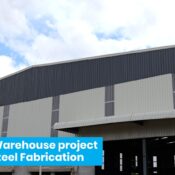
Choosing the Right Roofing Sheets Thickness: A Complete Guide for Every Building Type
When it comes to constructing durable, energy-efficient buildings, selecting the appropriate roofing sheet thickness stands as one of the most critical decisions that affects both immediate construction costs and long-term operational efficiency. Whether you’re a contractor working on industrial warehouses, an architect designing residential complexes, or a facility manager upgrading commercial buildings, understanding how to choose the right thickness can make the difference between a roof that lasts decades and one that requires frequent repairs.
The thickness of your roofing panels affects everything from thermal insulation and structural integrity to long-term maintenance costs and energy efficiency. With climate change intensifying weather patterns and energy costs rising globally, making an informed decision about roofing thickness has never been more crucial. As a leading manufacturer in the industry, Mount Industries has witnessed firsthand how proper thickness selection transforms building performance across diverse applications.
This comprehensive guide will walk you through the essential factors that determine optimal roofing sheet thickness, helping you make decisions that balance performance, durability, and cost-effectiveness for your specific project requirements.
Understanding Panel Thickness Fundamentals
PUF Panel Manufacturer solutions represent the gold standard in modern roofing applications, offering superior insulation properties combined with structural strength. The core thickness of these panels typically ranges from 20mm to 200mm, with each increment serving specific performance requirements. Understanding these fundamentals helps property owners make informed decisions about their roofing investments.
The polyurethane foam core acts as the primary insulation barrier, while the outer metal sheets provide structural integrity and weather protection. Thicker panels naturally offer enhanced thermal performance but come with increased material costs and structural load considerations. The key lies in finding the optimal balance for your specific application.
Climate Considerations for Thickness Selection
Your geographical location plays a crucial role in determining appropriate panel thickness. Regions experiencing extreme temperature variations require thicker insulation to maintain interior comfort while minimising energy consumption. PUF Sandwich Panel Price considerations often balance against long-term energy savings when evaluating climate-specific requirements.
Hot climates demand excellent thermal resistance to reduce cooling costs, while cold regions require superior insulation to prevent heat loss. Coastal areas face additional challenges from humidity and salt corrosion, necessitating robust panel construction. Mount Industries recommends 100mm thickness for moderate climates, while extreme conditions may require 120-150mm panels for optimal performance.
Building Type Applications
Different building types have varying thickness requirements based on their intended use and occupancy patterns. Industrial warehouses storing temperature-sensitive goods benefit from thicker panels that maintain consistent internal temperatures. Commercial buildings with high occupancy levels require balanced thermal performance and structural capacity.
PUF Sheets for residential applications typically use moderate-thickness panels that provide adequate insulation without excessive structural loading. Agricultural buildings storing livestock or crops need specialised thickness considerations to maintain optimal environmental conditions. Each application demands careful evaluation of performance requirements against budget constraints.
Structural Load and Support Systems
Panel thickness directly impacts structural loading on your building framework. Thicker panels weigh more and require robust support systems to ensure long-term stability. Roofing PUF Panel Manufacturer specifications include detailed load calculations to help engineers design appropriate support structures.
The relationship between panel thickness and structural requirements affects overall project costs. Upgrading support systems to accommodate thicker panels may offset some insulation benefits through increased construction expenses. Professional structural analysis ensures your building can safely support the selected panel thickness over its intended lifespan.
Thermal Performance Requirements
Energy efficiency standards increasingly drive thickness selection decisions. PUF Panels with greater thickness provide superior R-values, reducing heating and cooling costs throughout the building’s operational life. Government regulations and green building certifications often specify minimum thermal performance standards.
The investment in thicker panels typically pays dividends through reduced energy consumption. Buildings with high thermal loads benefit most from increased thickness, while structures with minimal climate control needs may justify thinner, more economical options. Mount Industries provides thermal performance calculations to quantify potential energy savings.
Cost-Benefit Analysis
Sandwich PUF Panels pricing varies significantly with thickness, making cost-benefit analysis essential for project success. Initial material costs increase with thickness, but operational savings through improved energy efficiency often justify the investment. Life-cycle cost analysis provides the complete financial picture.
Consider installation costs, which may increase with thicker panels due to handling requirements and structural modifications. Maintenance costs typically decrease with quality panel systems that provide long-term durability. Roofing Sheets from Mount Roof offers a warranty protection that factors into overall project economics.
Professional Installation Considerations
Proper installation techniques become increasingly critical with thicker panels. PUF Panels Thickness selection must account for installer expertise and available equipment. Specialised handling equipment may be required for panels exceeding standard thickness ranges.
Weather conditions during installation affect panel performance regardless of thickness. Professional installers understand how environmental factors influence panel behaviour and adjust techniques accordingly. Mount Industries provides comprehensive installation guidelines to ensure optimal performance from selected panel thickness.
Final Thoughts
Selecting the appropriate roofing sheet thickness requires careful consideration of climate conditions, building type, structural capacity, and long-term performance goals. The investment in proper thickness selection pays dividends through improved energy efficiency, reduced maintenance costs, and enhanced building longevity. Mount Roof stands ready to help you navigate these critical decisions with expert guidance and quality products that deliver lasting value.




